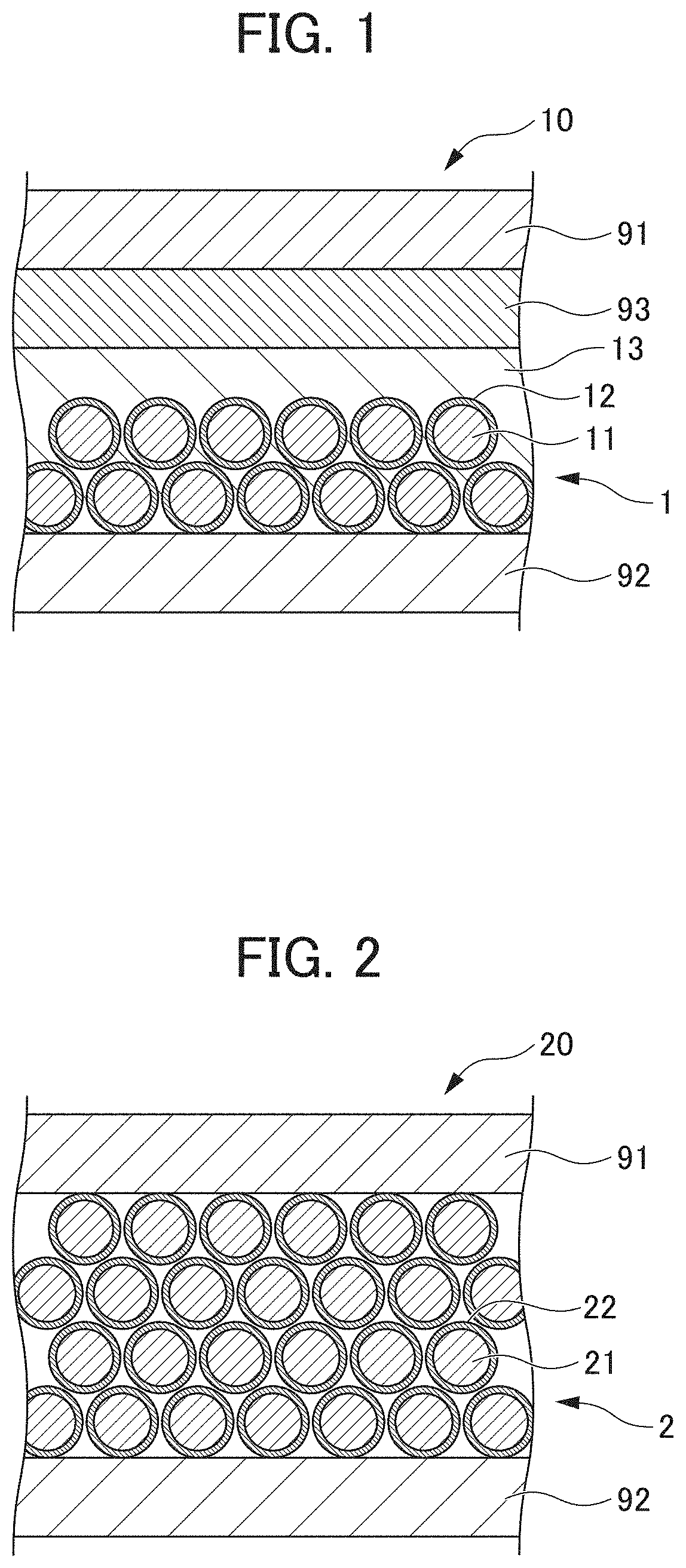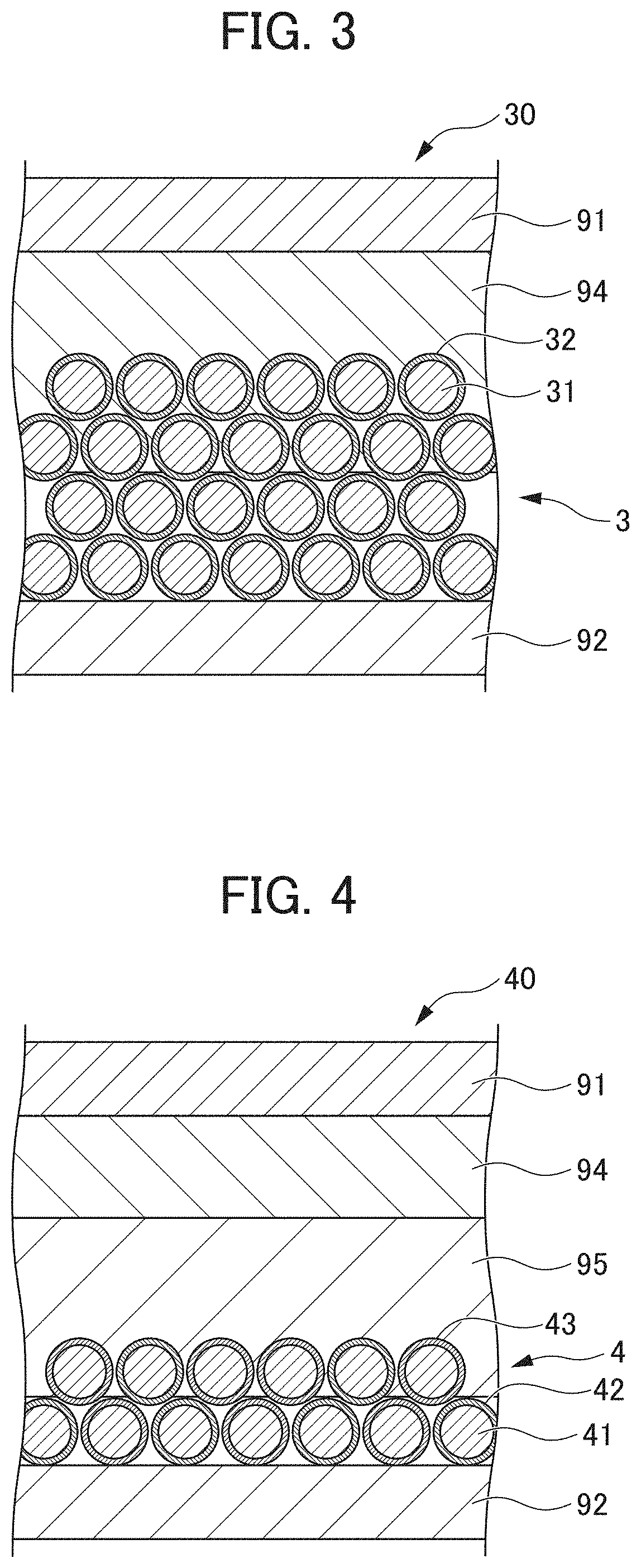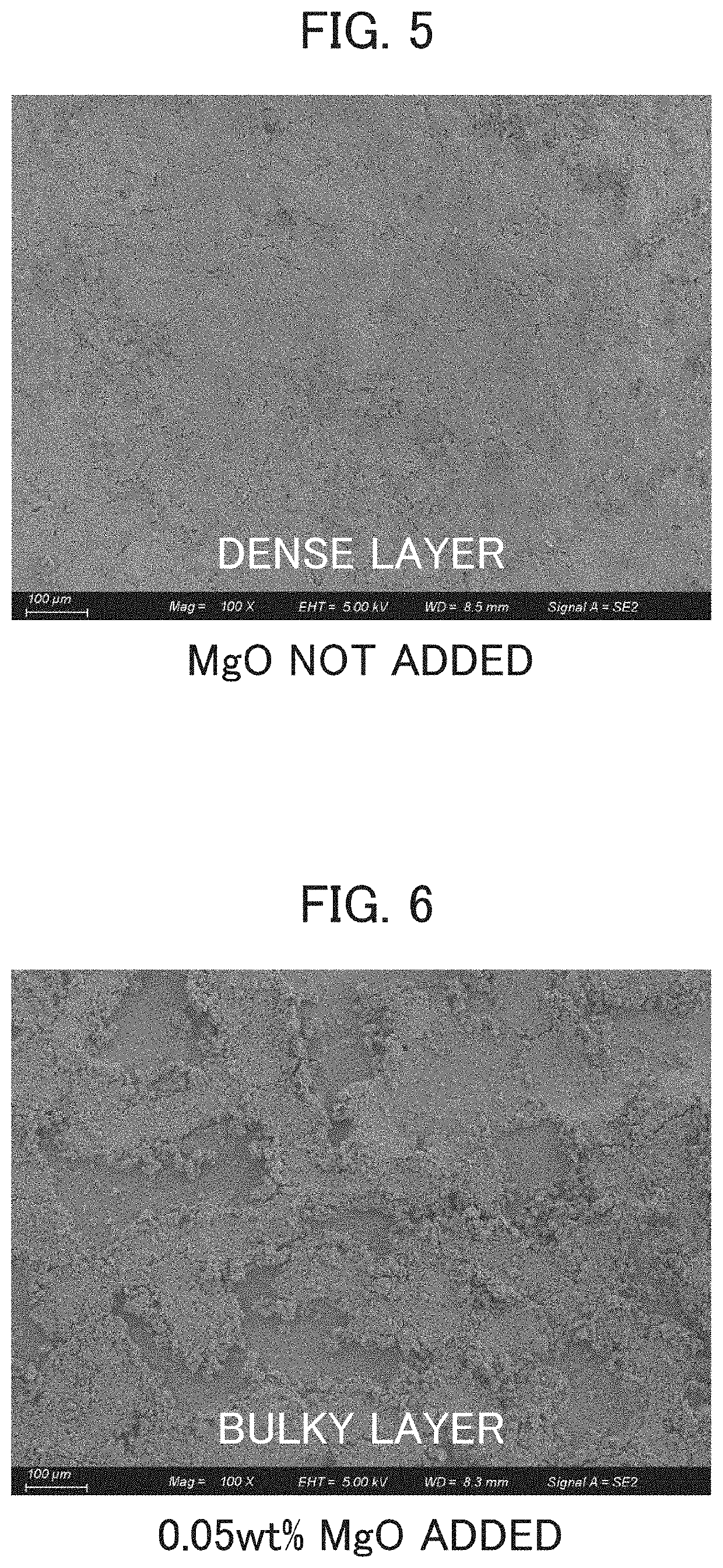Electrolyte medium for lithium secondary battery and lithium secondary battery
- Summary
- Abstract
- Description
- Claims
- Application Information
AI Technical Summary
Benefits of technology
Problems solved by technology
Method used
Image
Examples
example 1
[0094]As the lithium secondary battery according to Example 1, a lithium secondary battery having the following configuration was produced. The lithium secondary battery according to Example 1 produced was subjected to charge / discharge tests under the following conditions.
[0095]Negative electrode: Lithium metal
[0096]Positive electrode: Lithium cobaltate
[0097]Separator: Polypropylene nonwoven fabric (porosity 78%)
[0098]Electrolyte medium: 1 M LiPF6 / DMC+1.5 mass % MgO (average
[0099]particle diameter: 100 μm)
[0100]25° C., 150 mAhg−1-0.5 C, 100 cycles
examples 5 to 6
, Comparative Examples 3 to 4
[0113]As the lithium secondary batteries according to Examples 5 and 6 and Comparative Examples 3 and 4, lithium secondary batteries each having the following configuration were produced. In other words, the lithium secondary batteries according to Examples 5 and 6 and Comparative Examples 3 and 4 correspond to the lithium secondary battery of Example 1 described above except that the polyvalent cation salt added to the electrolyte medium was changed to Mg(TFS)2. The content, of Mg(TFS)2 in the electrolyte medium was set to 2.0 mass % in Example 5, 3.0 mass % in Example 6, 0.5 mass % in Comparative Example 3, and 1.0 mass % in Comparative Example 4. In Comparative Examples 3 and 4, Mg(TFS)2 was heated and dissolved in the electrolyte medium, whereas in Examples 5 and 6, Mg(TFS)2 was suspended in the electrolyte medium without heating. Mg(TFS)2 was dispersed in particulate form as (MgPF6)2 when left to stand, and its average particle diameter was nano-si...
examples 7 to 9
[0120]As the lithium secondary batteries according to Examples 7 to 9, lithium secondary batteries each having the following configuration were produced. In other words, the lithium secondary batteries according to Examples 7 to 9 correspond to the lithium secondary battery of Example 1 described above except that the polyvalent cation salt added to the electrolyte medium was changed to MgO in Example 1, Mg(TFS)2 in Example 8, and Mg(TFSI)2 in Example 9. These examples each use a magnesium salt having an average particle diameter of 40 μm and a different type of anion. In each of Examples 7 to 9, the content of the polyvalent cation salt in the electrolyte medium was set to 0.1 mass %, and the polyvalent cation salt was undissolved and suspended in the electrolyte medium. Mg(TFS)2 and Mg(TFSI)2 were dispersed in particulate form as (MgPF6)2 when left to stand, and its average particle diameter was nano-sized. The lithium secondary batteries according to Examples 7 to 3 produced were...
PUM
 Login to View More
Login to View More Abstract
Description
Claims
Application Information
 Login to View More
Login to View More - R&D
- Intellectual Property
- Life Sciences
- Materials
- Tech Scout
- Unparalleled Data Quality
- Higher Quality Content
- 60% Fewer Hallucinations
Browse by: Latest US Patents, China's latest patents, Technical Efficacy Thesaurus, Application Domain, Technology Topic, Popular Technical Reports.
© 2025 PatSnap. All rights reserved.Legal|Privacy policy|Modern Slavery Act Transparency Statement|Sitemap|About US| Contact US: help@patsnap.com



